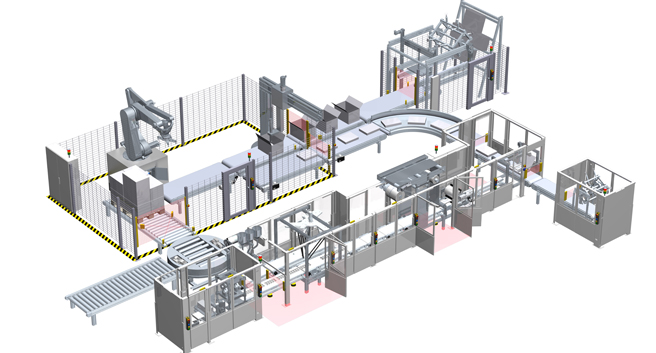Lenze introduces its new Safety Controller c250-S

Safety throughout the system simplifies engineering and increases machine safety
Photo by Lenze SE
The new Safety Controller c250-S from Lenze clears the way for projecting the entire drive, control and safety technology all as one piece. All of the machine’s safety needs can be programmed with just one engineering tool based on PLC open standard – regardless of whether the control technology is “grey” or “yellow”. The deep integration of the functional safety into the automation system makes the engineering easier, improves the diagnosis procedures, and reduces the number of interfaces and components. This saves time and money, and ultimately it also increases the machine’s availability and flexibility.
Everything from the drive-based safety technology to the focus on the entire automation system is about making things easy. This emphasis on easiness is also reflected in the significantly reduced need for wiring, thanks to the direct networking of the Lenze controllers with ready-made software solutions from the Lenze FAST Application Toolbox. In practice it means, for example, that a FAST module can control the reduction of a traversing speed while the safety control simultaneously monitors the safe maximum speed within the system. The optimal interplay of “yellow” and “grey” is achieved through the integration into the products and engineering tools.
Previously, the specialist in Motion Centric Automation concentrated on the drive-based safety functions. Now, though, safety has been completely integrated into the system. This expansion of the Lenze portfolio creates many advantages for the builders of machines and systems, not only through savings in wiring and hardware costs. Projects can be implemented faster because there are no longer any differences in the software tools for drive technology and safety. This is particularly beneficial in the implementation of projects where machine operators have to take action within a machine’s danger zone. And this is why interface problems and the time-consuming need for familiarising oneself with tools from different manufacturers are now a thing of the past. This uniformity also makes it possible, via EtherCAT, to show more detailed diagnosis messages: for example, “Supply voltage too low” instead of a simple “Error” message. Making more information available in this way means that valuable time savings can be made during commissioning or servicing.
For more information, please visit http://www.lenze.com.
News Categories
- » NEWS HOME
- » Automation & Robotics
- » Industry 4.0
- » Material Handling
- » Sensors
- » Quality & Testing
- » Machine Vision
- » Laser & Optics
- » Metalworking
- » Motion Control & Drives
- » Hydraulics & Pneumatics
- » Process Industry
- » Renewable Energy
- » Agriculture
- » Home & Office Furniture
- » Environmental Tech


